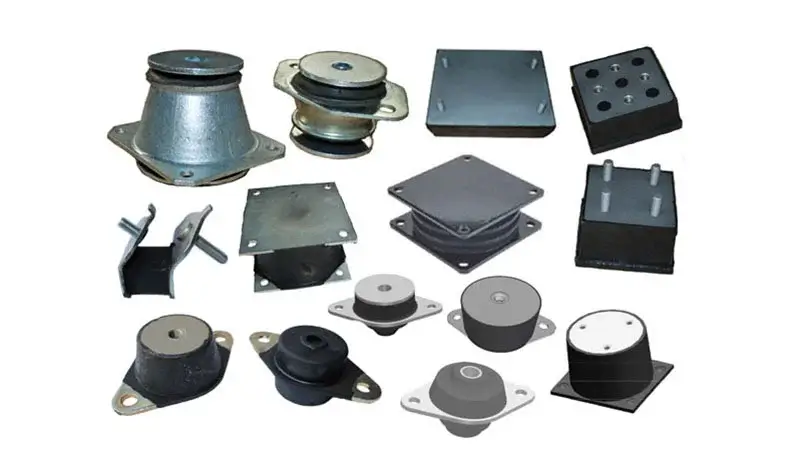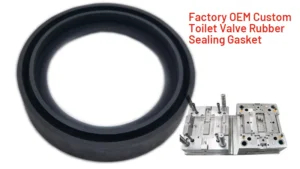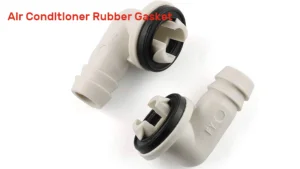Anti vibration mounts are specialized components designed to reduce and restrain the equipment. In the world of industrial machinery, and automotive engineering, the constant vibration can wreak havoc on equipment, performance, and even safety. In this post, we’ll delve into the world of anti-vibration mounts, exploring their functions, benefits, types, materials, production processes, and the profound impact they have across various industries.
What are Anti-vibration Mounts?
Anti-vibration mounts, also known as vibration isolators or shock mounts, are mechanical devices designed to reduce or isolate vibrations in machinery, equipment, and structures. They serve to minimize the transmission of vibrations from one component to another, thereby preventing damage, reducing noise, and improving the overall performance and longevity of the system.
The Benefits of Anti-vibration Mounts
Anti-vibration mounts offer several key benefits:
Reduce Noise and Vibration Transmission
Their primary purpose is to absorb and isolate vibrations generated by machinery, preventing the transfer of those vibrations to surrounding structures or equipment. This reduces noise levels and protects against damage from excessive vibrations.
Extend Equipment Lifespan
By minimizing vibrations, anti-vibration mounts help prevent issues like loosening of bolts, loss of production, malfunctions, and premature wear and tear on machinery components like gears and bearings. This extends the overall lifespan of the equipment.
Improved Performance: Anti-vibration mounts stabilize equipment, ensuring smoother operation, higher precision, and better overall performance.
Improve Production Quality
Vibrations can negatively impact the performance of machinery by causing misalignment, resonance, or reduced accuracy. Sensitive equipment like CNC machines, CMMs, and other precision instruments require minimal vibrations for accurate measurements and high-quality output. Anti-vibration mounts facilitate this by isolating vibrations.
Enhance Worker Safety and Comfort
Excessive vibrations can lead to operator fatigue, mistakes, and even accidents. Mounts reduce vibration exposure, improving worker health, safety, and productivity.
Comply with Regulations
Using anti-vibration mounts helps fulfill OSHA regulations on anchoring fixed machinery and controlling vibration exposure as per ergonomic guidelines.
Versatility and Durability
Available in various materials like rubber, thermoplastic elastomers, and metal-rubber combinations, anti-vibration mounts are durable and suitable for diverse industrial applications across different load capacities.
The Materials Used to Make Anti-vibration Mounts
Anti-vibration mounts are typically made from the following materials due to their excellent vibration damping and shock absorption properties:
Rubber
Rubber, particularly natural rubber and synthetic rubbers like nitrile (Buna-N), styrene-butadiene (SBR), and neoprene, are widely used for manufacturing anti-vibration mounts. Rubber’s inherent elasticity and ability to dissipate vibrational energy make it an ideal choice.
Thermoplastic Elastomers (TPE)
TPEs are a family of rubber-like materials that combine the properties of thermoplastics and elastomers. They offer good vibration isolation capabilities along with durability and resistance to environmental factors.
Silicone Rubber
Silicone rubber is another popular material for anti-vibration mounts due to its excellent thermal stability, resistance to aging, and ability to maintain its properties over a wide temperature range.
Rubber-Metal Combinations
In some cases, rubber is combined with metal components like steel to create anti-vibration mounts with enhanced load-bearing capacity and durability, such as wire rope mounts or sandwich mounts.
Visco-Elastic Polymers
Specialized visco-elastic polymers like Sorbothane are also used in high-performance anti-vibration mounts due to their unique ability to dissipate vibrational energy over a wide temperature and frequency range.
The choice of material depends on factors such as the operating environment, temperature range, load requirements, and the desired level of vibration isolation.
The Types of Anti-vibration Mounts

Based on the information provided in the search results, here are the main types of anti-vibration mounts:
Cylindrical Mounts (Rubber Bobbin Mounts)
Used for noise damping and effective vibration absorption in a wide range of applications. It can isolate both passive and active vibrations. Made of premium quality natural rubber and steel metal.
Conical Mounts (Rubber Cone Mounts)
Help isolate vibration and shock in machinery. That can carry high loads and provide stable vibration/noise reduction. Offer protection against extreme loads in tension, compression, and excessive forces.
Bushing Mounts (Center Bonded Bushings)
Made of bonded rubber and metal. Minimize static and dynamic vibrations. Suitable for high-frequency noise and vibration reduction while supporting high loads.
Sandwich Mounts
Provide support and rubber isolation for instruments and engine suspension. Reduce noise, vibration, and enhance equipment longevity. Used in automotive, railways, construction equipment, and heavy vehicles.
Rubber Levelling Mounts
Don’t need to be fixed to the supporting structure. Suitable for outdoor ACUs, axial/radial fans, motors, pumps, and compressors.
Spring Mounts
Used for low-frequency vibration damping in slow-speed rotating equipment. That can have individual, multiple open springs or encased spring designs. Spring mounts offer excellent vibration isolation across a broad frequency spectrum and are commonly used in
HVAC equipment, generators, compressors, and heavy machinery.
Bell-Shaped Elastomer Mounts
Suitable for machinery with radial vibration and high-frequency applications. Ideal for equipment prone to starts and stops.
Rubber Hangers
Used in ventilation and AC systems to absorb suspended load vibrations. Adjustable for sloping ceilings.
Rubber Pads
Rubber pads are simple yet effective anti-vibration solutions used to isolate machinery or equipment from surfaces such as floors or platforms. They are placed beneath the equipment to absorb vibrations and prevent them from transmitting to the surrounding environment.
The choice depends on factors like load, frequency, equipment type, and the desired vibration isolation level.
The Applications of Anti-vibration Mounts
The anti-vibration mounts have a wide range of applications across various industries. Here are some key applications of anti-vibration mounts:
Machinery and Equipment Isolation
Used to isolate vibrations from machinery like fans, pumps, chillers, compressors, generators, motors, and other rotating equipment. Prevent transfer of vibrations to surrounding structures, reducing noise and potential damage. Common in industries like manufacturing, power generation, HVAC systems, and more.
Vehicle and Transportation Applications
Used in automotive applications to isolate engine vibrations and improve ride quality. Applied in marine vessels to isolate vibrations from engines and generators. Used in railways and construction equipment to dampen vibrations.
Sensitive Equipment and Instrumentation
Employed precision instruments, CMMs, and other vibration-sensitive equipment to ensure accurate measurements and high-quality output. Used in audio/TV recording studios, concert halls, and cinemas to isolate vibrations and reduce noise.
Building and Infrastructure Applications
Used in multi-story buildings, hotels, and residential spaces to isolate impact noise and vibrations. Applied in hospital operating theaters, clean rooms, and laboratories to minimize vibration interference. Implemented in swimming pools, spas, and other water-based structures to dampen vibrations.
Industrial Applications
Used in punch presses, granulators, crushers, and other heavy industrial equipment to isolate vibrations and prevent structural fatigue. Employed in piping systems, electrical transformers, and other plant room equipment.
Conclusion
The versatility of anti-vibration mounts, combined with their ability to effectively isolate vibrations and reduce noise, makes them invaluable across a wide spectrum of applications where vibration control is crucial for equipment protection, operational efficiency, and occupant comfort. By understanding the importance of anti-vibration mounts and selecting the appropriate type and material for specific applications, engineers and designers can optimize equipment performance, ensure operational reliability, and create safer and more comfortable working environments. Cooperate with experienced manufacturer, they will help to choose the suitable materials and types of anti-vibration mounts for you.






